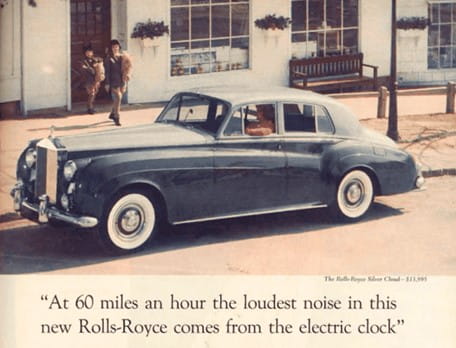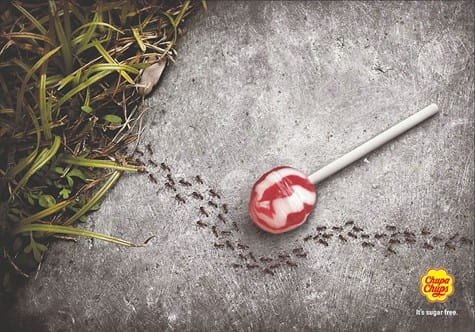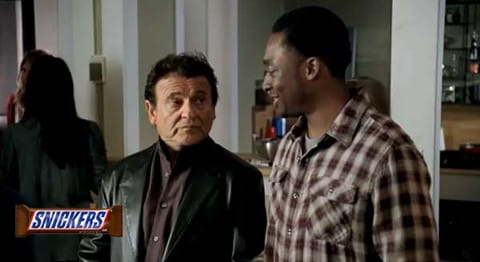You might come across an ad that you like and think to yourself, “How the heck did they come up with that idea?” I would argue that there’s not a step-by-step set of instructions to follow, but there is most definitely a method to the madness. Whether it’s in print, a commercial, a digital ad, or any other medium, a great ad naturally connects with its customer because it was created by someone who truly understands who they are. Knowing exactly “what” you want to say makes the creative endeavor of figuring out “how” to say it in an interesting way much easier.
1. Know the Customer
You may find it surprising, but understanding your customer is quite possibly the most important part of creating effective advertising. That knowledge should inform every decision you make in writing and designing the ad.
Successful brands have customers that want the brand and its products in their life. In order to reach that level of success in brand-building, you first need to thoroughly research your customer. Put yourself in their shoes. Find out where they go online and spend some time in those places. Where do they work? What do they do for fun? How do they talk? What would make their life easier or better? Always remember, no matter what your product or service is, people buy things and love brands that make them happy in one way, shape or form. That is what advertising really boils down to.
Takeaway: As part of your discovery process, study your customers’ behaviors to gain a true understanding of their wants and their needs. Once you’ve gained that understanding, great ideas on how to advertise to them will come naturally.
2. Position Your Product
With the insight you’ve gained from your research, you’re ready to build a well-informed strategy on how to position your product in the market. Understand the strengths and weaknesses of your product. Check out at how your competitors are positioning themselves. After all, the greatest ad creative won’t gain any traction with your audience if the angle is wrong.
Takeaway: Assess your competitors before establishing a positioning statement and messaging strategy. With that foundation in place, you can begin writing your marketing messages and developing your creative.
3. Communicate the Benefit
A common mistake that marketers make in their messaging is neglecting to talk about the benefits of their product. Instead, their natural inclination is to talk about themselves. Never assume that people will be interested in you. Fundamentally, if you want someone to do something, you must tell them what’s in it for them. That’s just the way people think. If your elevator speech is about yourself rather than what your product does for people, you’ll lose their interest immediately.
Take this Ajax ad, for example. Rather than focusing on the features of the great new product and package they developed, Ajax communicates the benefit of the product — clean up spills quicker than ever before. People can immediately understand how this product can make cleaning up spills faster.

Ajax; Advertising Agency: Y&R, New Zealand
Takeaway: Make your ad about what your product can do for the reader rather than what you think makes your product great. If you want someone to take a specific action, you need to tell them what’s in it for them.
4. Be Honest
This one sounds obvious. But it’s worth mentioning, because even mild hyperbole can destroy the credibility of your message. Hopefully at this point you have a product that’s in demand because it solves a problem for people. If that’s the case, then you have a good story to tell without having to try too hard to be convincing. Don’t overreach when stating your value. In a world where social media is so prevalent, people will not hesitate to throw your statements right back at you to try to make you look dishonest.
And if it’s something else you need to address in an ad to preserve your brand, take a cue from this KFC ad. A chicken shortage in 2018 forced KFC to close more than half of its 900 restaurants in the UK. Customers were angry. In response, KFC bought full-page ad space in newspapers throughout the UK. The ad consisted of an empty bucket of chicken with a cleverly rearranged logo sitting atop a sincere apology. KFC addressed the situation as honestly as they could, and their customers appreciated it.

KFC; Advertising Agency: Mother
Takeaway: One thing you can count on is that people will be commenting on your ads online. Make sure that all your claims are rock-solid and don’t be afraid to be vulnerable when the situation calls for it. Always be real.
5. Speak Plainly
First, a good general rule of thumb to follow is that if you don’t use the word in everyday conversation, don’t use it in your advertising. Except for legitimately needing to use a technical word in your writing, stick to using words that everyone will understand. Not just vocabulary buffs.
Second, don’t try to write copy that sounds like what you think copywriting should sound like. In other words, don’t write copy that sounds forced or clever for the sake of being clever. Writing good copy is more than just wordplay.
Take a look at this ad for Rolls Royce written by copywriting legend David Ogilvy. Is the headline catchy? Nope. Not even a little bit. But it successfully communicates the quality of the experience you’ll have driving a Rolls Royce, which is something their demographic is looking for in a new car. They’re also looking for style, but the picture takes care of that. This was the car company’s most successful ad of all time, increase car sales by 50% from 1957 to 1958.

Rolls Royce; Advertising Agency: David Ogilvy
Takeaway: Using obscure words or trying too hard to be clever may turn people away. Tell a good story, but strategy and facts should always be your foundation.
6. Focus Your Message
Fight the urge to try and accomplish a laundry list of marketing goals all at once in your ad. When you try to say it all at the same time, you end up saying nothing. In order to deliver a strong and memorable message, you must strip your ad down to just the elements needed to communicate your message. Save the extra details for another part of your campaign.
A good example of communicating a singular message in a memorable way is this ad for Chupa Chups sugar free lollipops. It’s rather simple by design, and rather effective because of that. Ants, as we all know, are attracted to sugar. The ants intentionally march around the lollipop instead of stopping for a snack, indicating that there is no sugar in it. This is a funny way of communicating the message, which makes it stick in peoples’ minds. Pun intended.

Chupa Chups; Advertising Agency: DDB, Spain
Takeaway: Don’t try to say too much at once. Focus on one primary benefit or brand message and dedicate the ad to communicating that message in a way that people will remember.
7. Be Creative
If I had a nickel for every time a client asked me to make an ad that looked like something that someone else has already done... well, I’d have a lot of nickels.
Now why would they do that?
Most likely because it would make them feel safe, or comfortable.
But what do they stand to gain by playing it safe?
Mediocre results, in all likelihood.
Thankfully, some clients do instinctively see the business value in creativity. And kudos to them. Because people want to engage with products or services that are marketed in a creative way.
Take the iconic “You’re Not You When You’re Hungry” Snickers campaign introduced in 2010. It’s predicated on the accepted truth that being hungry can make a person irritable and act out of character. The ad execution utilizes a well-known celebrity personality, like Joe Pesci, as the “out-of-character” version of an everyday person. This is brilliant.
Why, you might ask? Because it communicates the benefit of pulling out a delicious candy bar to quickly relieve your bout of hunger (satisfaction), and it does this in a way that's entertaining and memorable.

Mars/Snickers ; Advertising Agency: BBDO, New York
The campaign successfully uses creativity to drive brand and sales growth. In its first full year, the campaign helped increase global sales of Snickers by 15.9% and grew market share in 56 of the 58 markets in which it ran.
The development budget and ad spend for this campaign are obviously well out of reach for many brands, but the fact that creativity drives business results applies to any scale.
Takeaway: Playing it safe with your ad will not help your brand grow! Be bold, because no one remembers safe, mediocre ads.
Final Thoughts
Don’t rush your ad development just to get something into market. Taking a little time to do it the right way greatly increases your chance of people engaging with your brand — and greatly decreases your chances of wasting your ad money.
At Liquid, we have an experienced team of strategists, writers, designers and digital marketers who are always eager to learn about your business and develop a great ad campaign. Contact us today to learn more!

